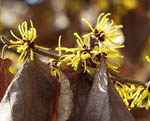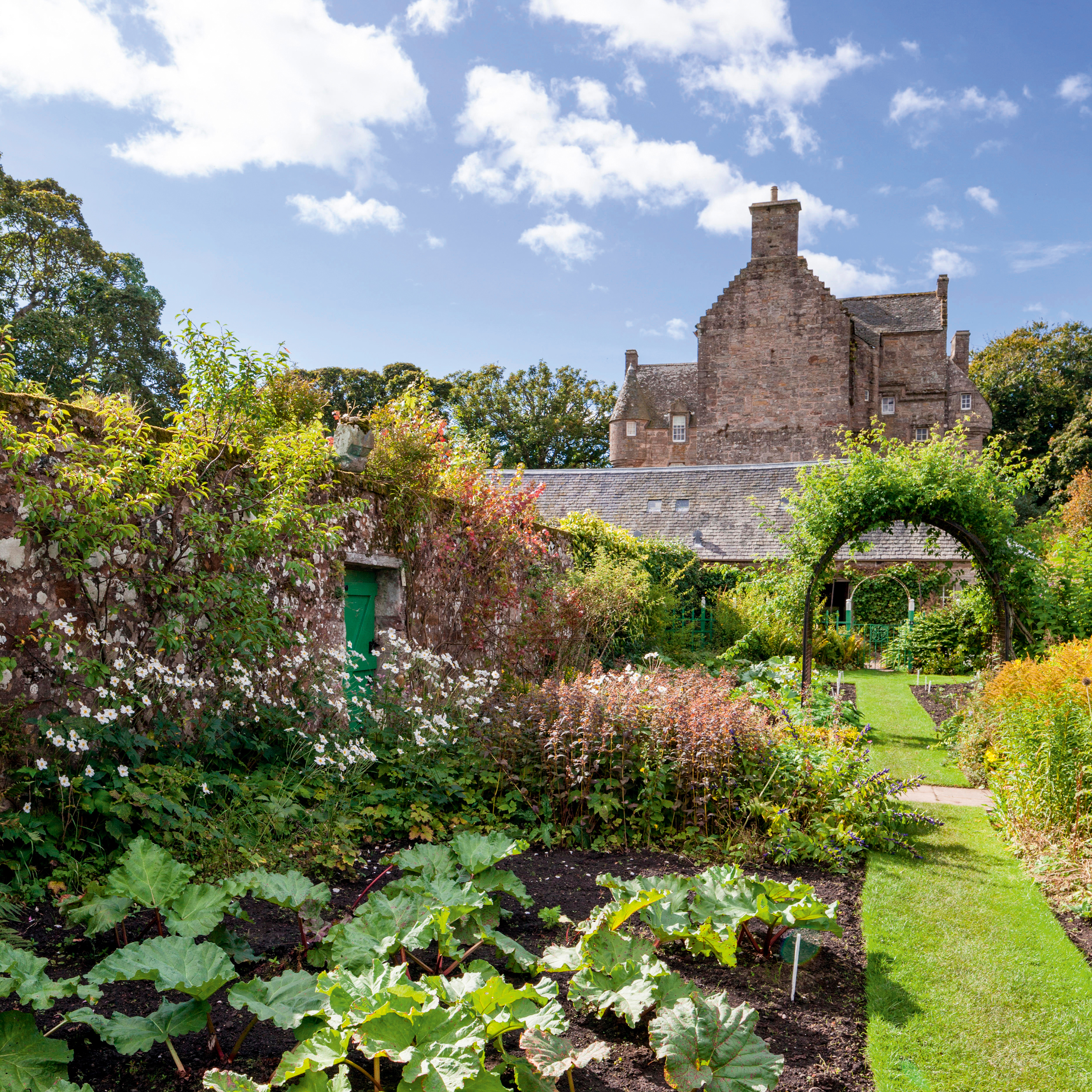Grow witch hazel
For scent and colour at this time of year, turn to the witch hazel, says Alan


** Plants described in purple link straight through to the page in the Country Life nursery where you can buy them directly **
Crumbs - that's what I scour the garden for at this time of year. Crumbs of encouragement. It's as if reassurance is needed that spring really will come again. Perhaps the recession will slow it down; perhaps it won't bother coming at all. But that is where Nature scores over Man: it may choose its moment, but it will always oblige-eventually. The snowdrops are nearly up, but there is one tree in particular that beats them to the January trophy-Hamamelis, the witch hazel. Now, the one attribute you do need with witch hazels is patience. They're not fast growers. In time, they will make open-shuttlecock-shaped trees 12ft-15ft wide and perhaps 10ft high, which makes them suitable for relatively small gardens, although their effect, it has to be said, is best appreciated when they're planted in groups. Space them 15ft apart in small plantations and plan to live long enough to see them at maturity in 20 years' time.
Witch hazels are frequently described as citrus-scented, but, in order to detect any fragrance on the chill winter air, you'll need to cup your hands around the flowers, exhale (preferably after a garlic-free meal) and then inhale, the perfume being released by the warmth of your breath. The neatest thing about this tree is that the autumn tints of its fading foliage match the colour of its flowers, hence, yellow-flowered witch hazels produce yellow autumn tints and those with orange or reddish flowers fade to ruddier hues.
* Subscribe to Country Life and save
Which to grow? Well, I reckon the yellow-flowered varieties are the best, as they show up more vividly on dull winter days when the redder tones are less obvious, but I'd grow any of them and snip flowering twigs from them. Do so sparingly- when they grow this slowly, you don't want to cut off a year's growth-and pop the twigs in tiny jars or vases to decorate your table or desk. Natives of eastern Asia and North America, they grow best in good soil that's neutral to acid, although I've grown them in soil overlying chalk that's been well enriched with manure and is not too shallow.
Dry, alkaline earth isn't to their liking and they will grow particularly slowly under such circumstances. One always feels obliged to champion newer varieties, but in this instance, there's still plenty of life left in the old favourite Hamamelis x intermedia Pallida, whose sulphur-yellow blooms stand out well against an army-blanket sky. It would always be my first choice. The variety Advent is an early flowerer, Arnold Promise is also highly favoured, and of the darker varieties, Diane is reddish and Jelena a coppery orange. We always used to assume that most were varieties of Hamamelis mollis, but then it was discovered that they are hybrids between H. japonica and H. mollis, hence the renaming as varieties of H. x intermedia - a diplomatic sobriquet.
The witch hazels have a close relative of which I am equally fond, the Persian ironwood from the Caucasus and Iran. It rejoices under the botanical name of Parrotia persica, and although it may not have flowers that are so long in the petal, they are a rich crimson colour and also open in winter. You won't notice them at a distance, but will marvel at them close up, although they're not as resilient to frost as those of the witch hazel.
Sign up for the Country Life Newsletter
Exquisite houses, the beauty of Nature, and how to get the most from your life, straight to your inbox.
Where the Persian ironwood really scores is in its habit and its foliage. It grows rather faster than witch hazel, and makes a spreading tree eventually about 20ft high and 30ft wide, with branches that stretch down to the ground. Its glossy-surfaced leaves begin colouring up as early as August in my garden. This attribute alone makes it stand out as a good garden plant, but do grow it where it can be given room to spread without being butchered by secateurs and loppers. Spring might seem a long way off at the moment, but with just a few bright beauties to keep us going, we can travel hopefully through the darker months of the year, knowing there are greater glories to come. None, however, will be more greatly appreciated.
* Follow Country Life magazine on Twitter
Country Life is unlike any other magazine: the only glossy weekly on the newsstand and the only magazine that has been guest-edited by HRH The King not once, but twice. It is a celebration of modern rural life and all its diverse joys and pleasures — that was first published in Queen Victoria's Diamond Jubilee year. Our eclectic mixture of witty and informative content — from the most up-to-date property news and commentary and a coveted glimpse inside some of the UK's best houses and gardens, to gardening, the arts and interior design, written by experts in their field — still cannot be found in print or online, anywhere else.
-
 Alan Titchmarsh: 'It’s all too easy to become swamped by the ‘to-do’ list, but give yourself a little time to savour the moment'
Alan Titchmarsh: 'It’s all too easy to become swamped by the ‘to-do’ list, but give yourself a little time to savour the moment'Easter is a turning point in the calendar, says Alan Titchmarsh, a 'clarion call' to 'get out there and sow and plant'.
By Alan Titchmarsh
-
 Rodel House: The Georgian marvel in the heart of the Outer Hebrides
Rodel House: The Georgian marvel in the heart of the Outer HebridesAn improving landlord in the Outer Hebrides created a remote Georgian house that has just undergone a stylish, but unpretentious remodelling, as Mary Miers reports. Photographs by Paul Highnam for Country Life.
By Mary Miers